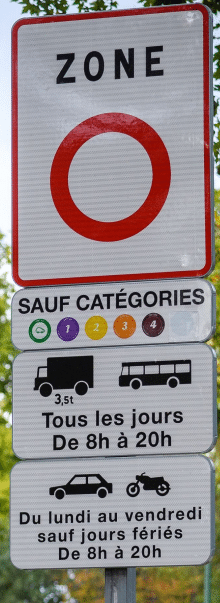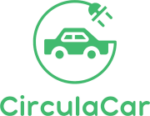What is a ZFE ?
The low Emission Zones (ZFE-m or ZFE), are urban areas where the circulation of certain polluting vehicles is either prohibited or restricted. The Mobility Orientation Law mandates the implementation of these zones to combat air pollution in urban environments,particularly that caused by diesel vehicles.
According to a study by Public Health France, outdoor air pollution is currently responsible for 48,000 deaths per year in France.
ZFE-m are established if air quality standards are not met or for any agglomeration with more than 150,000 inhabitants. In France, more than 43 cities are affected by ZFE.
Local authorities are tasked with implementing LEZs in their territories based on national directives. These local authorities are free to impose a stricter timetable than that set by the state. This is also why the traffic rules are not identical from one LEZ to another.For example, the LEZ in Grenoble-Alpes Métropole currently only applies to utility vehicles, whereas the Greater Paris Metropolitan Area has decided to impose restrictions on private vehicles five days a week.
These restrictions mainly affect older and more polluting vehicles based on vehicle classification, a system known as Crit’Air stickers. However, circulation bans can also apply to all diesel vehicles in usually situations.

Towards a Total Ban on Diesel Vehicles in French Cities

There are several reasons why banning diesel in cities can be an effective solution to combat air pollution. First, diesel vehicles emit fine particles as well as nitrogen oxides (NOx),which are particularly harmful to human health. They can cause respiratory problems, increase the risk of cardiovascular diseases, and raise the likelihood of premature mortality. By banning diesel in cities, we can significantly reduce the amount of fine particles in the air as well as NOx emissions and improve the air quality breathed by residents.
Several metropolises have already announced plans to ban all diesel professional or utility vehicles regardless of their date of registration :
- The Greater Paris Metropolitan Area (Grand Paris) announces a ban on diesel traffic starting from 2024.
- Grenoble-Alps Metropolitan Area announces this ban for professionals starting from 2025.
- The Greater Lyon Metropolitan Area (Grand Lyon) aims to completely ban diesel from 2026.
- Other metropolises are also considering this ban, such as the Eurometropolis of Strasbourg for 2028.

Electric retrofitting, an alternative to continue driving within Low Emission Zones (ZFE-m)
ZFE-m are necessary for the reasons mentioned earlier, but they still represent a significant financial burden for businesses if they have to replace their fleet with new low-carbon vehicles. Moreover, it remains an ecological contradiction not to preserve the lifespan of existing vehicles and to recommend purchasing new ones.
However, there is an interesting alternative to new electric or clean vehicles : electric retrofitting.This involves converting a thermal (gasoline or diesel) vehicle into an electric one. According to a study by ADEME,electric retrofitting can be twice as environmentally friendly as purchasing a new electric or clean vehicle because it allows for the reuse of an existing vehicle rather than producing a new one, which has a lesser impact on the environment. Therefore, it is the relevant solution to both reduce air pollution imposed by ZFE-m and greenhouse gas emissions and the use of resources..
The limited production capacity of new vehicles
Furthermore, it is important to note that automobile manufacturers are not able to quickly replace the diesel vehicle fleet with electric or clean vehicles. The pre-COVID production capacity of automobile manufacturers allows for a replacement of the vehicle fleet by only 5% per year. Therefore, it would take several decades to replace all diesel vehicles with cleaner ones.. Electric retrofitting emerges as an interesting solution to quickly reduce greenhouse gas emissions and improve air quality in urban areas.
Convert utility vehicles to electric with CirculaCar
At Circulacar, we offer a catalog of vans ready for conversion dedicated to professionals needing to continue operating in urban areas.
Your vehicle is already equipped, branded, amortized, and running smoothly; we can extend its lifespan by converting it to electric.
Financial incentives for retrofitting are available for each ZFE-m to support companies in making their vehicle fleets cleaner. Firstly, the government offers a conversion grant of €5000 for professionals, which can be combined with local grants if the company is located within a ZFE-m or if it can demonstrate significant turnover within a ZFE-m. These local grants, depending on the location, can range from €1500 to €7500.
At CirculaCar, we can also provide leasing financing solutions for your vehicle conversions. With the savings on fuel and maintenance, it's a very cost-effective solution that helps companies minimize the impact of ZFE-m implementation.
If you would like to learn more about converting vans to electric, contact-us !
